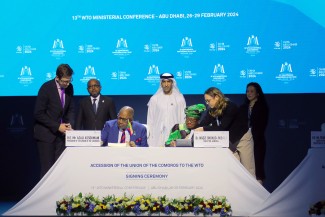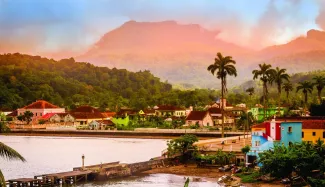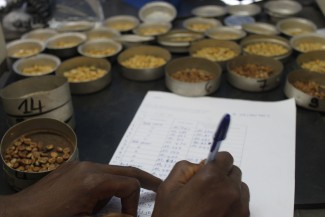|
|
|
Tourism is an important income-generator in Africa, where the World Travel & Tourism Council (WTTC) has demonstrated that over a third of all direct tourism GDP in 2018 was attributed to wildlife. It is important for many African countries such as Botswana, Kenya and South Africa, and particularly in many of the continent’s least developed countries (LDCs) such as Madagascar, Rwanda, Tanzania and Uganda - where the wildlife tourism sector is important for economies and livelihoods.
As we are all aware, the COVID-19 pandemic has had a global impact on the travel sector. By May 2020, 100% of global destinations had imposed travel restrictions, and 45% had totally or partially closed their borders for tourists. As a result, the WTTC has predicted a global loss of 100.8 million jobs in 2020 and US$2.7 trillion in revenue in the tourism sector.
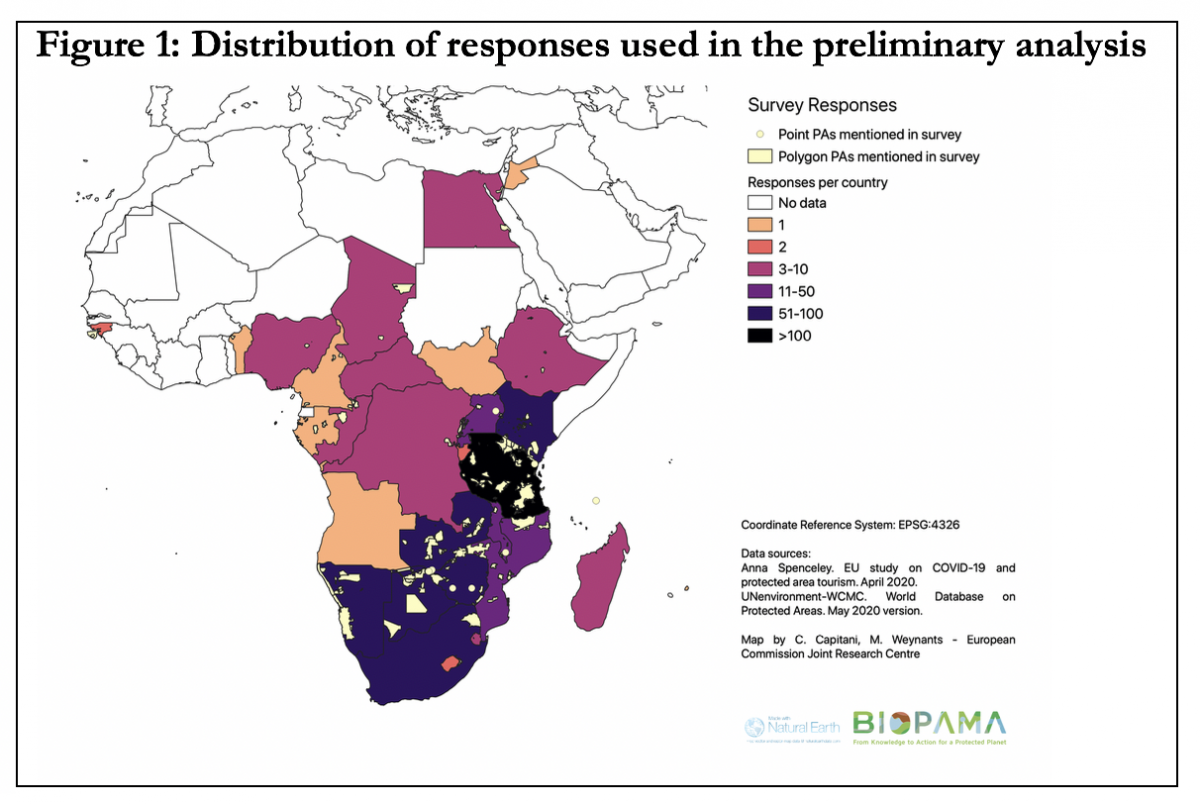
In order to understand the impacts of the pandemic on protected area tourism, a survey was conducted on behalf of the European Union to examine the impacts and recovery needs. A preliminary analysis of the online survey results was conducted for 618 responses from operators working in 278 protected areas in 38 African countries, including 18 LDCs (Angola, Benin, Burundi, Central African Republic, Chad, Democratic Republic of Congo, Ethiopia, Guinea Bissau, Lesotho, Madagascar, Malawi, Mozambique, Rwanda, São Tomé and Príncipe, South Sudan, Tanzania, Uganda, Zambia). The respondents included operations offering accommodation (58%) tour operator services (52%), activities and experiences (38%), restaurant/bar services (14.2%) and hunting (11%).
Impacts on business
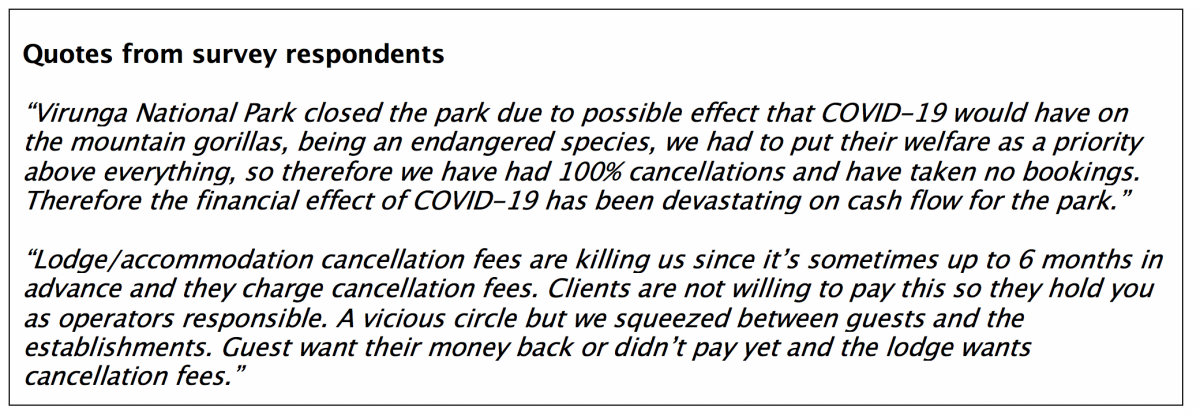
Protected areas have been closing to visitors across the world to reduce the spread of coronavirus between visitors, and also the threat of transmission to wildlife. For example, gorilla tourism in Rwanda, Uganda and the Democratic Republic of Congo has been suspended, while national parks in South Africa have been closed. The survey showed a steep decline in operator’s clients in March 2020 compared to the same time last year (61% less), coupled with a substantial drop in future booking requests (71% lower). The majority of operator’s clients cancelled between March and June 2020 (82% cancellations, on average). In response to this immense challenge, nearly all respondents have implemented measures to mitigate the impacts (see Figure 2).
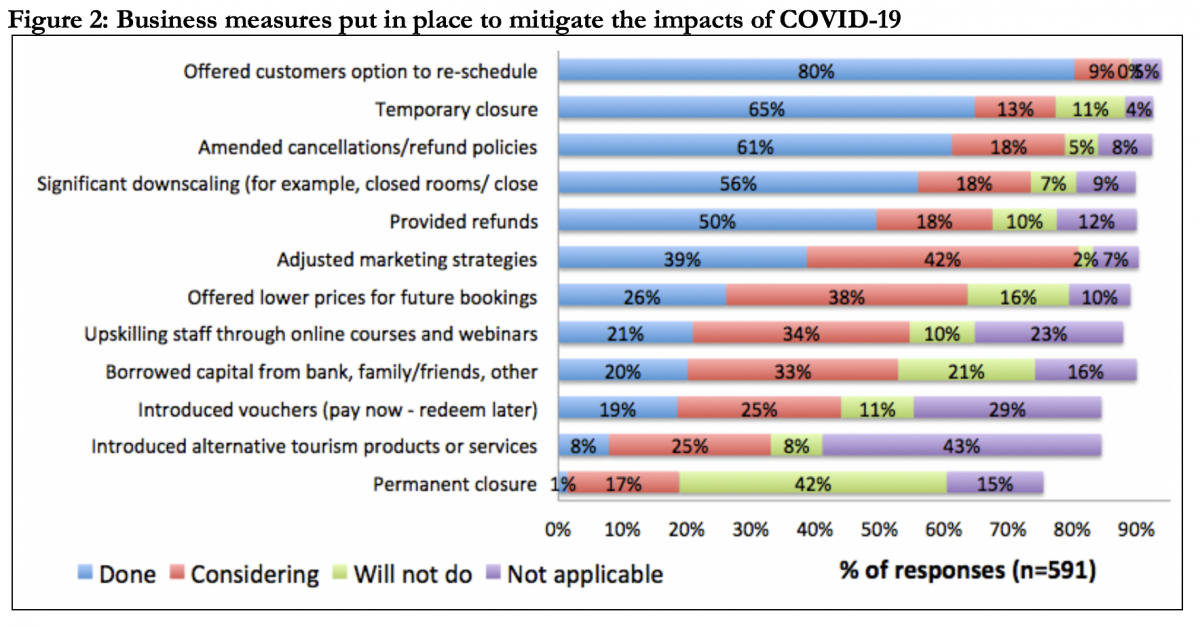
Impacts on local livelihoods
Employment: The 618 African operators reporting their staff numbers collectively employed nearly 40,000 people in the last completed financial year. The majority (60%) are local people recruited from within 50 km. On average 64% of local staff members are on reduced wages (e.g. reduced salaries, reduced hours etc.). More than half have put some (or all) of their local employees on leave without pay since February 2020, and nearly half have made redundancies. If the crisis continues it is predicted that, on average, more than three quarters of local employees will be affected with reduced wages/leave without pay/made redundant/unemployed. In practical terms, nearly 14,000 local employees – including those living within and adjacent to protected areas – would be adversely and directly affected (as would their dependents) – just from this sample.
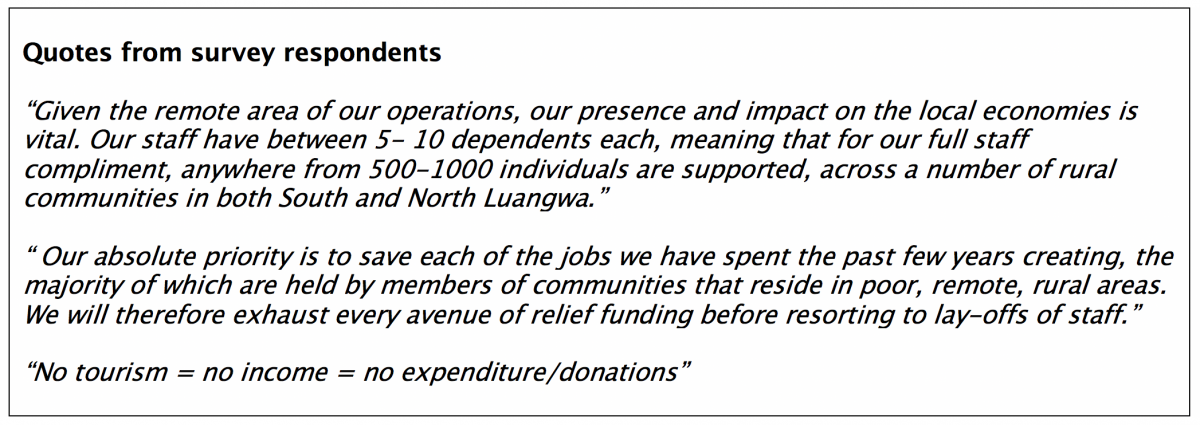
Procurement: Collectively in the last completed financial year (FY) 363 operators spent US$238.6 million purchasing products (e.g. operational products such as food, drink, craft, office supplies, capital equipment etc.). On average, 30% of items were bought locally (i.e. within 50 km) from producers and retailers. Operators predict an average 38% decline in local expenditure on products in the current FY, which would result in a total decline of US$39.3 million in local expenditure. They also predict a US$47.6 million decrease in local service expenditure for the current FY (down by 47%).
Community initiatives: The operators collectively contributed US$30.2 million worth of donations and corporate social responsibility payments to local communities in the last FY. They predict that contributions will be US$9.7 million less in the current FY (a 32% decline).
Overall, the preliminary data implies US$97.2 million less expenditure on products, services and donations reaching local communities this FY compared to last year (a 43% decline) just for this sample.
Impacts on conservation and environmental services
The pandemic has had mixed impacts on conservation and the environment. Some of the positive signs have included wildlife returning to places they used to live, feed or nest. However, reduced visitation has also led to some increases in wildlife crime in areas usually protected by rangers and also the presence of visitors, but also some declines where the lockdowns have impeded the transportation of people and wildlife products.
Environmental crime is one of the most important immediate concerns of operators, and the majority believe it will get worse as a result of the COVID-19 crisis. Compounding prediction is the predicted change in operator’s expenditure on payments for local environmental services. Expenditure on environmental services (e.g. for security, anti-poaching, park or concession fees etc.), 277 operators spent a total of US$47.5 million in the last complete FY. Of the operators reporting local expenditure, and a change in expenditure, it is estimated that this will lead to a US$20.7 million decline in spending in the current FY.
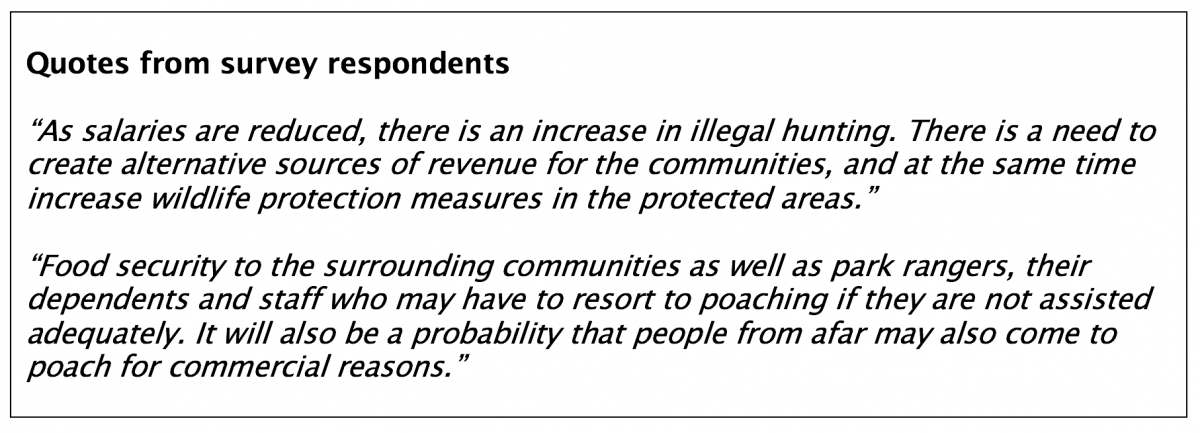
What is needed?
Operators reported that the most important support their businesses required to support them through the crisis were unemployment support for workers, financial support for recovery and cashflow, coupled with tax deductions or deferments (see Figure 3). Three quarters of operators seek financial support of up to US$249,000, and the most frequent request is for under US$49,000. They seek loan conditions including flexible repayments, and interest rates close to zero. Related to this, most operators are definitely/quite likely to seek funds from donors (e.g. local or foreign aid assistance) or government funds (e.g. grants, incentives).

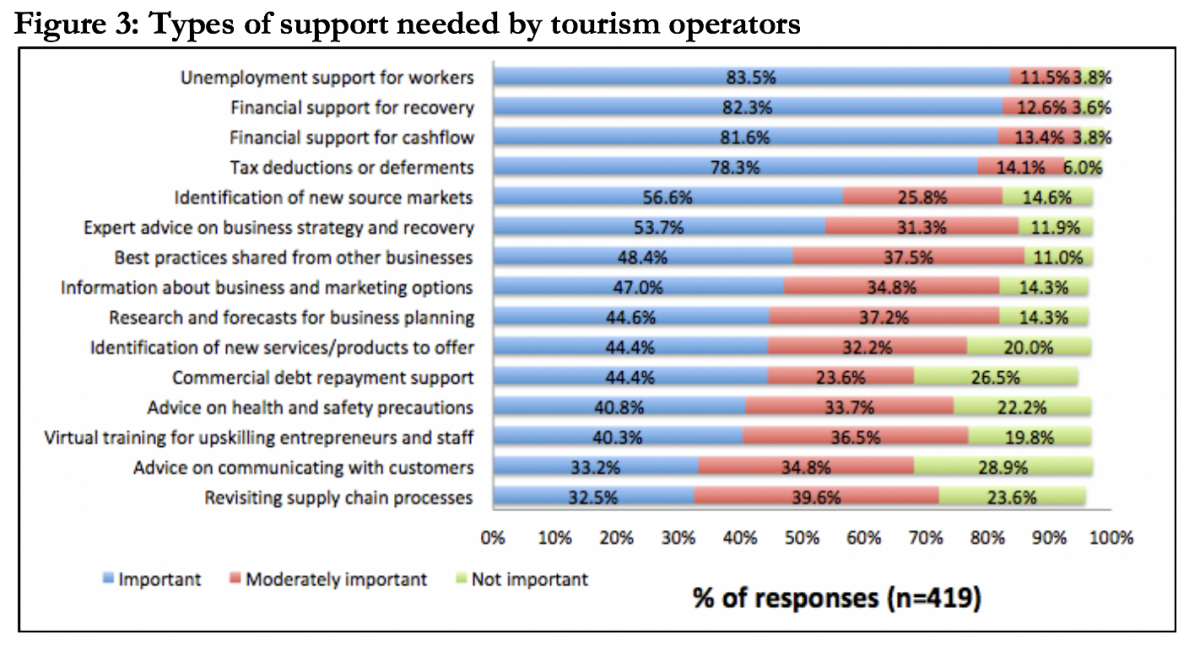
Responses to COVID-19 from governments and the tourism sector need to protect people (including visitors and tourism workers), ensure business survival along the tourism value chain, and improve coordination mechanisms. They also need to re-consider our relationship with nature and wildlife, to prevent the emergence of further zoonotic diseases in the future, and safeguard all life on earth. This crisis has starkly demonstrated that the wildlife tourism sector is a major economic sector, benefitting both conservation and communities that depend upon it.
--------------------
This study was financed by the European Union, under the GPGC thematic programme on environment.
The study was implemented by the Eurata Consortium. The contents of this publication is the sole responsibility of EURATA Consortium and can in no way be taken to reflect the views of the European Union.
This paper is drawn from the EU policy paper by the author “COVID-19 and protected area tourism: A spotlight on impacts and options for Africa”. The preliminary data can be accessed here.
If you would like to reuse any material published here, please let us know by sending an email to EIF Communications: eifcommunications@wto.org.

